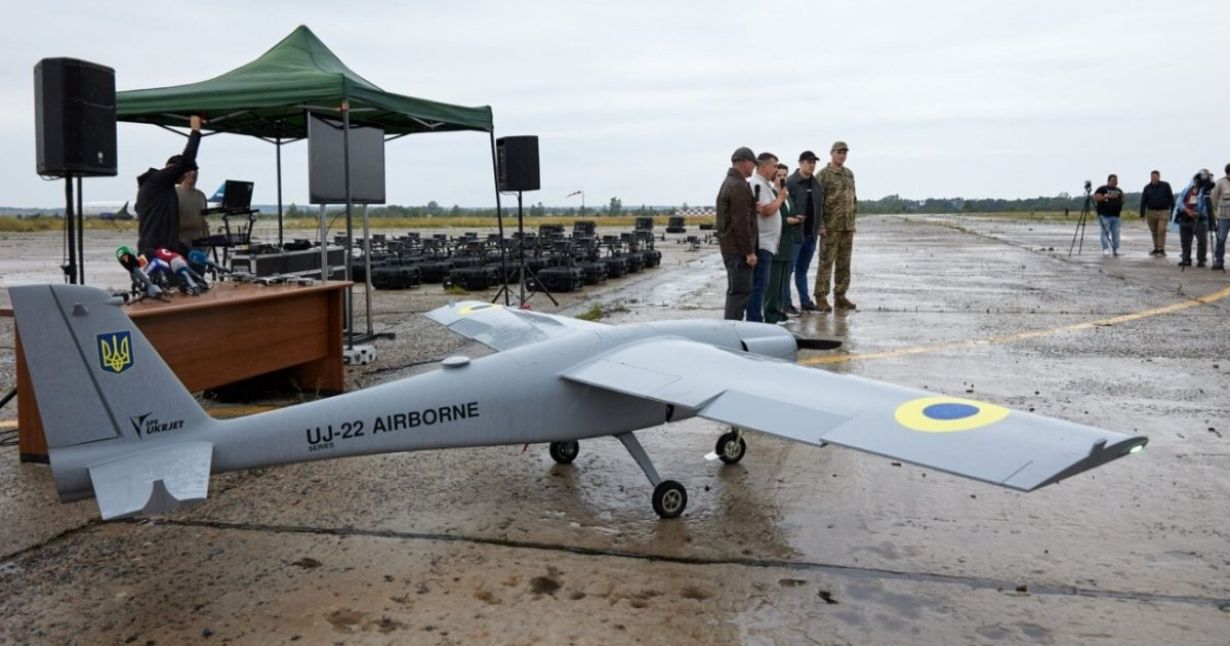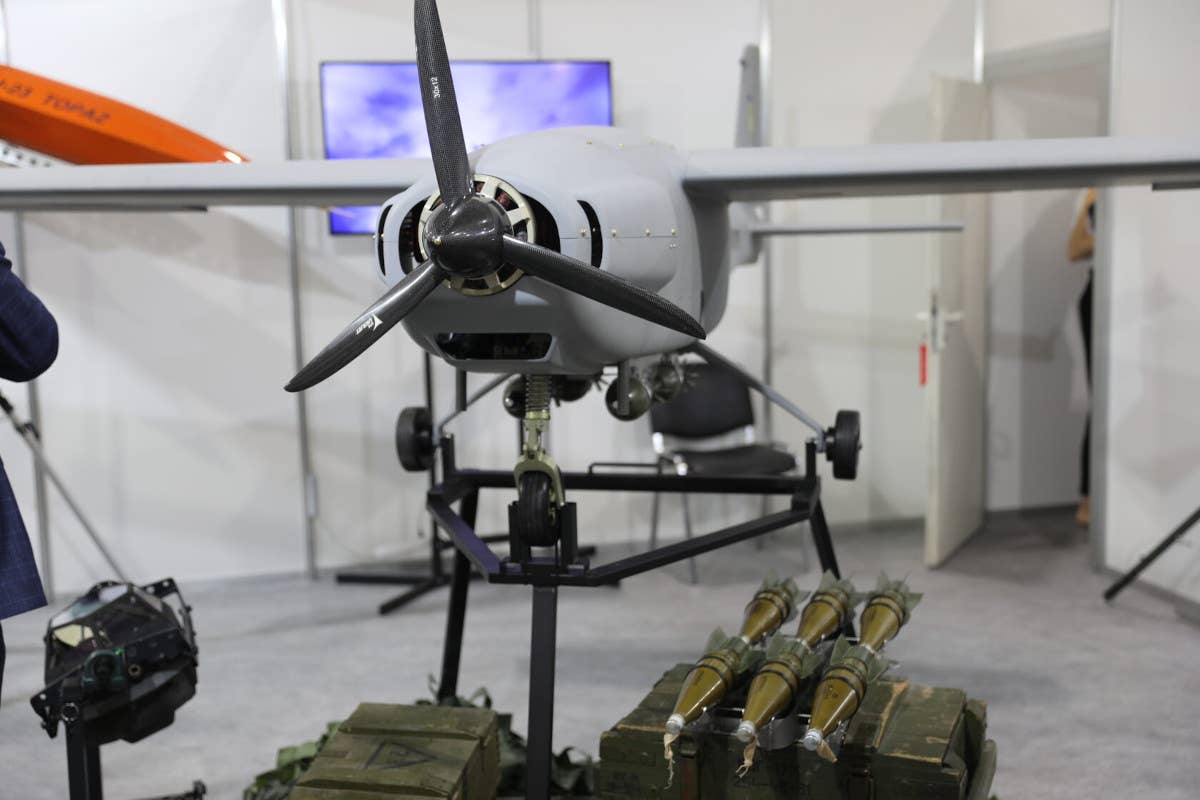On February 28, a senior Russian official claimed that a military drone attempted to attack a gas complex near the Moscow region. Images and videos of the debris revealed the drone was Ukrainian-made UJ-22.
The appearance of a UJ-22 close to the Russian capital coincides with a wave of drone attacks that Russian authorities blamed on Ukraine that targeted southern and western regions.
On February 28, the governor of the Moscow region, Andrei Vorobyov, said that a UAV crashed-landed in the town of Gubastovo close to the capital, and it appeared it was headed for a “civilian infrastructure site.”
The Ukrainian drone was reportedly trying to hit a Gazprom gas compression site in the suburbs of Moscow, around 50 miles southeast of the Kremlin. The pictures uploaded on social media revealed that the drone was Ukrainian-made UJ-22.
Unsurprisingly, the Ukrainian authorities don’t appear to have made any remarks regarding the drone incident near Moscow. Ukraine doesn’t openly take responsibility for assaults inside of Russia.
UAV ?? UJ-22 rinvenuto vicino al recinto della stazione di compressione del gas di Gazprom a Kolomna, vicino Mosca.
Oltre a questo, un drone di grosse dimensioni sarebbe stato avvistato nei pressi di San Pietroburgo, l'aviazione ?? sarebbe dovuta intervenire per abbatterlo. 1/2 pic.twitter.com/JJGdV6czy3— OSINT-I (@OSINTI1) February 28, 2023
A Gazprom spokesperson confirmed to Russian media that the UAV allegedly clipped trees shortly before its target and crashed 10 meters from the outer fence of the gas compression facility.
If the most recent drone attacks came from Ukrainian soil, they would stand among the most daring missions since the Kremlin began its full-scale invasion last February.
Furthermore, the drone’s presence so near the capital clearly may lead to fresh criticism of Russian President Vladimir Putin’s handling of the war on the home front.
The attacks caused airspace over St. Petersburg and areas closer to the Ukrainian border, like Voronezh and Belgorod, to be closed, making it a stressful day in Russia.
Besides that, the drones looked to have hit their targets in at least one instance. An explosive-equipped drone struck a Rosneft oil depot in the Krasnodar region early on Tuesday.
According to the reports, the drone attacks hit the depot’s boiler room. The facility is situated in Tuapse, and the city administration claimed that the drones were unsuccessfully hitting the oil tanks.
Tuapse is about 300 miles from the Ukranian border. Also, unsuccessful drone attacks were reported in Russia’s Belgorod and Bryansk regions, which are close to the Ukrainian border.
Ukrainian-Made UJ-22 Drone
The UJ-22 drone is produced by the Ukrainian company UKRJET. This drone resembles a plane and has fixed tricycle landing gear. It is capable of taking off and landing on a regular runway.

According to the manufacturer’s website, it is propelled by a small gas engine that rotates a single three-bladed propeller at the front. The drone has a maximum range of 800 kilometers (just over 497 miles). It can stay in the air for up to seven hours.
In theory, this would allow it to launch from a location close to the Ukrainian-Russian border and reach the Moscow region. The UJ-22’s actual range and endurance rely on its payload and other variables.
The drone can travel further distances with a predetermined flight plan to reach the desired location. When the drone is sufficiently close to the target location, another operator may be able to assume control.
In the past, UKRJET has displayed various weapon choices for the UJ-22, such as racks to carry mortar rounds and rocket-propelled grenade warheads modified as miniature air-dropped munitions.
By adding some sort of internal weapon, it might conceivably be transformed into an improvised kamikaze drone. It’s unclear whether the drone that crashed close to Moscow was equipped with any payload.

Nevertheless, launching a drone like the UJ-22 into this region of Russia, with or without any form of payload, may have given Ukrainian forces relevant insights into their adversary’s air defense capabilities and operating methods.
Increased worries about potential attacks were already evident from the Russian military’s deployment of Pantsir air defense systems on top of several buildings in Moscow and close to other important places in the region in January.
In recent months, more S-400 surface-to-air missile batteries also seem to have been stationed inside the city limits.
As the conflict stretched into its second year, the strikes presented a new challenge to Russia, even if the latest drone assaults did not appear to have caused severe damage.
- Contact the author at ashishmichel(at)gmail.com
- Follow EurAsian Times on Google News




